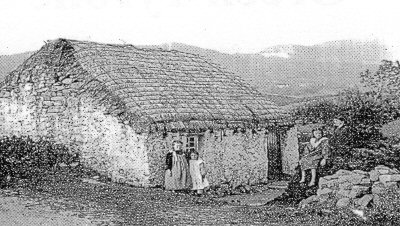The writers to whom he was most attracted at this early stage were Sean O Faolain (whom he always singled out as the best Irish short story writer), Liam O’Flaherty, Frank O’Connor, Peadar O’Donnell and Michael MacLaverty.
He felt that these writers had the best grasp of the people about whom they wrote. The novel ‘Islanders’ by Peadar O’Donnell had particular memories for him.
However, the richness of imagery and the vividness of the language which we associate with Michael’s creative work came essentially from the people. He has continually paid tribute to the richness which he encountered around the firesides in Dromintee. He was not consciously influenced from the outside and is, therefore, the last, and possibly only authentic voice of South Armagh language in written form.
In his early articles which appear in the opening chapters of ‘At Slieve Gullion’s Foot’ (December 1941) he mentions the ‘quaint, frank and even graphic phrasing of the idiomatic speech’ of the old people and how he finds ‘both poetry and pathos, imagination and colour filtering through their words and sayings’.
The other outstanding influence on the emerging writer and folklorist was the landscape and the earth around Sliabh Gullion in South Armagh.
The mystic quality of Sliabh Gullion has been recognised from the earliest times, as can be seen from the cairns on the summit and its association with Irish mythology. In modern times Standish O’Grady, the Cork-born historian and essayist who has been called ‘the father of the Irish revival’, called Sliabh Gullion ‘Mountain of Mystery’ in an essay which he wrote about the mountain; Eoin MacNeill said that South Armagh was the most historic region in Ireland and Art Mac Bionaid, the poet and Gaelic scribe from Ballykeel, Mullaghbane, said that you could ‘kick any stone and history leaps out at you’. Maud Gonne McBride, who was one of the first people to encourage the young writer, wrote to Michael and said that the mountain (Sliabh Gullion) ‘ sang’ to her and she could ‘write down the air’. W.B. Yeats, George Moore, A. E. (George Russell) and Arthur Griffith, amongst others, made pilgrimages to the mountain. Even the Duke of Connaught, the third son of Queen Victoria climbed the mountain from the Dromintee side.
Michael J. makes one of his few excursions into verse when he writes of Sliabh Gullion.
‘Dome of Sliabh Gullion
And of your brood
My soul is a part
In your rock-heather heart
Slave to your mood’
He returns to the mountain continually in his writings and describes all of its moods and mystery. Sliabh Gullion is a ‘brooding spirit’, ‘mystic-dome’, ‘a standard which governs one’s whole outlook’, ‘a heritage’, ‘an earth spirit’, ‘a hypnotic presence’, ‘a frightening spirit’, and ‘mysterious and immense’. The ‘moods of its personality’ he says, ‘dominated and influenced the lives and living of everyone within its shadow, even the very fields’. The mountain dominates the surrounding area so completely that its spirit breathes out of the clay, which is turned by spade or plough.
… more later …
